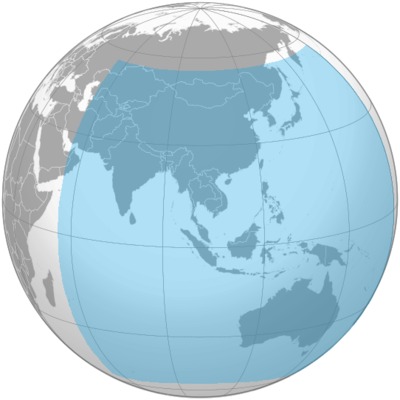Satellite navigation made easier
This month marks the 30th anniversary of the decision of the then US president, Ronald Reagan, to open up the GPS satellite navigation system to non-military use. That decision was taken in the wake of the shooting down of Korean Airlines flight 007 in 1983, after the aircraft strayed off course and was intercepted by Soviet fighters.
GPS for civilian use has come a long way since then. Indeed, it has become almost ubiquitous, with receivers embedded in smartphones and attached to car dashboards.
But a GPS fix, particularly in tricky locations such as on city streets between tall buildings and in the depths of open cut mines, is only as good as the number of GPS satellites visible in the sky at any particular time. The more satellites, the better the fix. So what if there were more satellites?
Thanks to research conducted in Australia, those who rely on GPS for location fixing and navigation could soon get those extra satellites … in the form of the Chinese-developed Beidou navsat system.
After combining two satellite systems for the first time in 2012, Curtin University spatial scientist Professor Peter Teunissen, in conjunction with the Cooperative Research Centre for Spatial Information (CRCSI), has now taken the integration process a step further.
Professor Teunissen said combining signals from GPS and Beidou would provide major advantages because Beidou satellites are continually visible to Australian receivers.

“Have you ever tried to navigate in a city riddled with towering skyscrapers using a smartphone, but failed when the dot on the in-built navigation system can’t seem to pin you down in the right location?” Professor Teunissen said. “This is because the satellites the system is using to find your location are positioned at a low angle in the sky and their signals are blocked by the skyscrapers.
“By combining GPS with Beidou we are making use of Beidou’s 14 new satellites that cross our sky at a high angle, increasing satellite availability, improving positioning capability and ultimately creating a system that is perfect for both urban and mining environments.”
Professor Teunissen said Beidou was still in development, along with a growing number of next-generation GNSSs from several countries around the world. By 2016, more than 100 GNSS satellites will be in operation, resulting in a broader and more diverse network. Beidou plans to have 35 satellites fully operational by 2020.
A recent report on the benefits of precise positioning services, prepared by ACIL Allen Consulting Pty Ltd for the Department of Industry, Innovation, Climate Change, Science, Research and Tertiary Education, projected a boost to Australia’s GDP of up to $13.7 billion by 2020. Most benefit would be reaped in the mining, agricultural, construction and surveying industries.
In 2012, Professor Teunissen and his Curtin colleague Dr Dennis Odijk completed the first research in Australia to integrate two GNSSs, combining GPS with Galileo.
Melbourne Metro Tunnel officially opens, featuring CBTC
The project is understood to feature Australia's first communications-based train control...
Solving the challenge of in-tunnel GNSS
GNSS signals are rendered useless in tunnels and other subterranean environments; an effective...
Ericsson improves wireless WAN for Sunswift Racing
Sunswift Racing is using technology from Ericsson Enterprise Wireless Solutions to provide...



